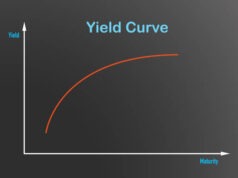Penny stocks seem like a great opportunity to make money. They are inexpensive, and you can buy them with just a few dollars of your hard-earned cash. However, penny stock trading poses risks that many people don’t even know about!
In this blog post we will discuss the risks of investing in penny stocks so you are better informed before making any decisions on how to invest your money.
Risks of Investing in Penny Stocks
If you’re reading this, it’s likely that penny stocks are something you’ve considered investing in. You might have seen a few posts on your Facebook wall from people who say they doubled their money and made thousands overnight – but the risks!
Penny stock investments can be incredibly enticing to new investors, especially when we see stories like these posted as advertisements all over social media. It’s easy to think that buying stocks with low prices will lead to quick cash gains because there is less risk involved than if you were betting more significantly on high-priced blue chips (though there may still be significant risks). But what many don’t realize is just how risky penny stocks can actually be. Investing in these types of stocks are not commonly recommended as good personal finance habits.
Continue reading to see some of the most common scams you might encounter when penny stock investing.
Penny Stock Scams
Penny stocks come with high risks though with the potential for above-average returns. As a result, investors should be mindful of how they invest in penny stocks because they can lead to financial ruin quickly.
Penny stocks are often the target of scams. Penny stock brokers will take advantage of inexperienced investors and show them how to get free stocks in companies with little-to-no chance for success, but they promise these bogus investments will make money that can’t be lost.
These penny stock scammers use false advertising to lure people into investing their hard-earned cash in these risky stocks – not knowing that there is no guarantee at all!
In fact, in 2017, one company stole almost $40 million alone from unsuspecting victims through scamming tactics alone!
Victims were promised “guaranteed” profits and then when it came time to pay out, the broker simply disappeared without any warning or notice. They left countless people penniless as well as broke.
To avoid this possibility, we’re going to highlight some of the most popular penny stock scams people face when deciding to invest in penny stocks on Robinhood, Webull or other stock apps.
Pump and Dump
Pump and dump penny stock scams happen regularly. Penny stock promoters, or people who are responsible for selling the stock, will buy shares of penny stocks and inflate its price.
The promoters then sell their shares at a higher price to unsuspecting investors who believe that they are getting in on something “hot.” These pumpers often use email or online posts to tout how much money people can make with certain penny stocks so as to encourage more buying.
The problem is that most of these schemes don’t last very long: once the promoter dumps his shares, there’s no one left to sustain the inflated prices – leaving those late buyers holding expensive paper (i.e., worthless stock).
If you receive an investment newsletter highlighting penny stocks or other investments, be sure to read the fine print on their website. You may find the newsletter writer discloses a relationship with the company being promoted.
Short and Distort
Short and distort is the mirror image of pump and dump. It works by shorting the stock on Robinhood or one of its alternatives (usually in a bull market) and then releasing false information to send the price plummeting.
This way, they make money by selling short at an inflated rate while buying back their shares lower for a tidy profit. This doesn’t last long though because soon after there’s no one left selling these pumpers’ stocks – leaving those many holding the bag.
Shorting stocks always carries risks because your losses are theoretically infinite. This happens because stocks can continue rising indefinitely and you have to pay the price for their rise.
Whereas when you buy a stock, the worst that can happen is the stock becomes worthless.
Reverse Merger Deceptions
Another popular penny stock scam tactic is called a Reverse Merger Deception. This scam will involve a company that is almost bankrupt and has very little earning potential. It may be in the pharmaceutical, food manufacturing or technology sector for example.
The scammers buy shares of this doomed-to-fail private company and then take it public by merging with another already successful publicly traded entity through an exchange offer they have created – typically for millions of dollars more than what they purchased the stock for!
In other words, these reverse merger deceptions are scams where people are given false hope that stocks from a dying business will do well because it’s about to merge with one that’s thriving.
Reverse Merger Deception Scams usually happen when somebody takes over as CEO of a struggling firm and looks for a way to right the ship through shady means. Typically, the shareholders of the private company exchange their shares for the publicly-traded company’s and have the assets of the former company become the primary assets of the new, surviving public company.
In reality, nothing has changed and the company still stinks. But, in the process, investors in the private company have made money by luring investors into the publicly-traded company’s stock without realizing they’re buying a sinking ship.
Guru Scam
People who spend a lot of time developing a following in the penny stock space can be called a “Guru.” Sadly, a following doesn’t make someone an expert, let alone a trustworthy one worth following.
The Guru Scam takes advantage of the following and uses it to steal from unsuspecting investors. A “Guru” scam works by having an investor pay someone for tips on what stocks they should buy in order to profit off their followers’ investment decisions.
It’s not uncommon for these gurus to tell people who have lost money in other investments about how profitable investing can be when you follow them-they’ll lure you into thinking that your losses were just short term setbacks and that all would be well if only you could get back up again with one or two more trades.
This is a type of Ponzi scheme called pyramiding, which relies on new investors entering the funnel at regular intervals so those before them can make returns on their investment.
Guru Scams can be very dangerous because they seem legitimate but are often anything but.
Penny Stock Promoters
Penny stock promoters are the culprits of many penny stock scams. They promote shares of penny stocks through spam emails and unverifiable social media posts promising high returns. They may also send out defective products to get them in the hands of potential investors who might then be more apt to buy their overpriced stock.
Penny stock promoters usually don’t actually own any shares themselves, but they try to convince you that they are experts with insider knowledge on a particular company’s success or failure without disclosing this relationship.
Since these companies have very low trading volumes, it can sometimes take just one purchase for an investor – or someone close to them – to cause the share price to skyrocket temporarily before crashing back down again, which is how the promoter makes money while dumping their own holdings at inflated prices.
It’s important to note that the movements of many penny stocks result from scams, and they can be very hard to spot. The lack of information makes it difficult for these small companies to be researched thoroughly and thus subject to speculation and market manipulation.
Because of this, it’s difficult or impossible for individuals who trade on their own without access to sophisticated information from research firms or insiders to identify which ones are legitimate and worth investing in.
Therefore, you should be mindful of these scams before buying into a company’s turnaround story, dramatic fall from grace, or some other seemingly too-good-to-be-true or too-bad-to-be-believable development. Though, because these companies are often small, by the time any verifiable news comes out, you’re likely too late to capture any movement in the stock.


































